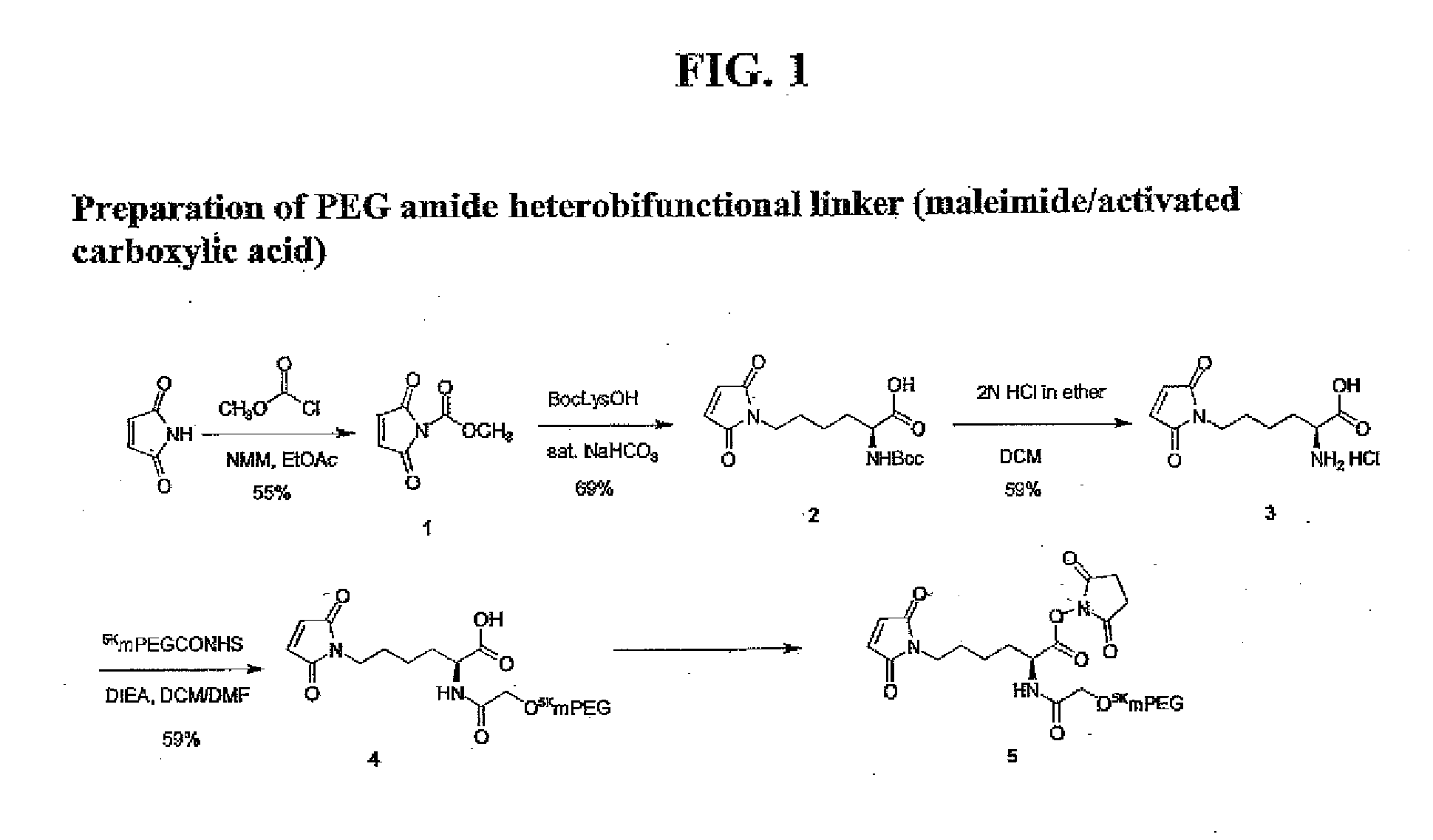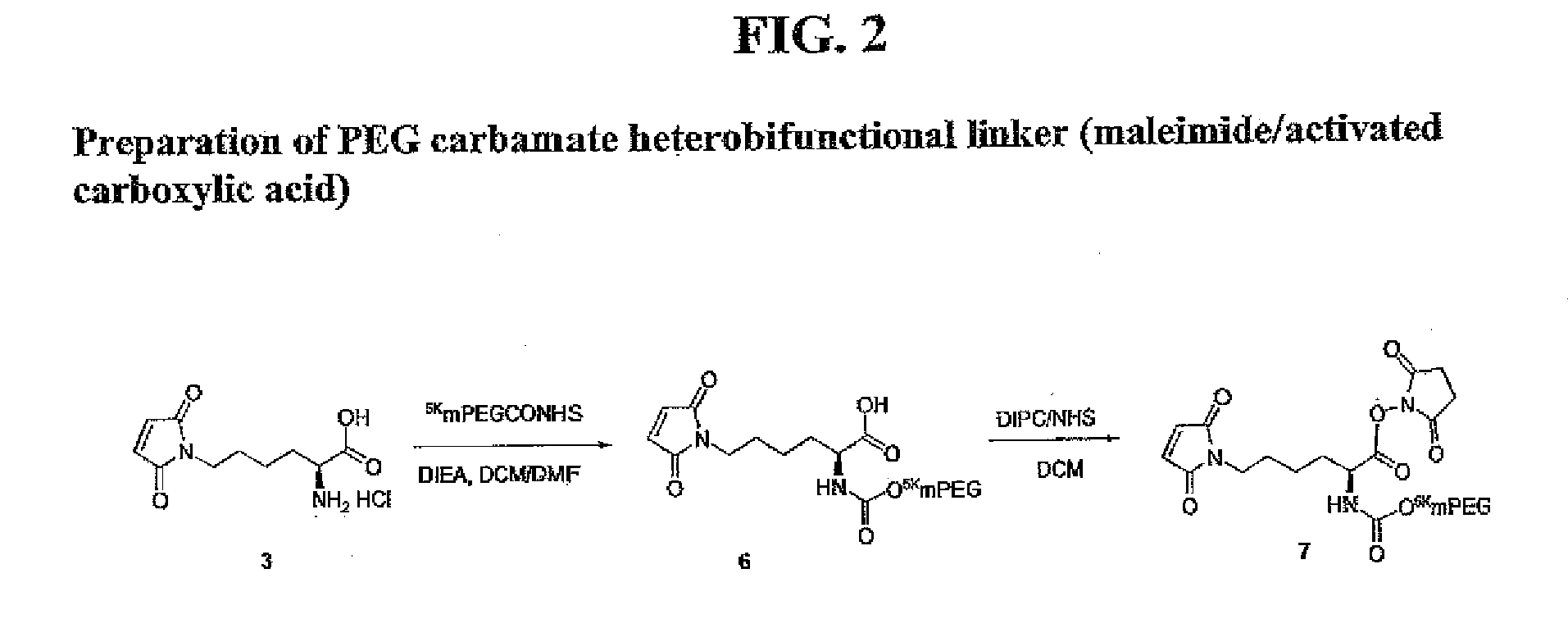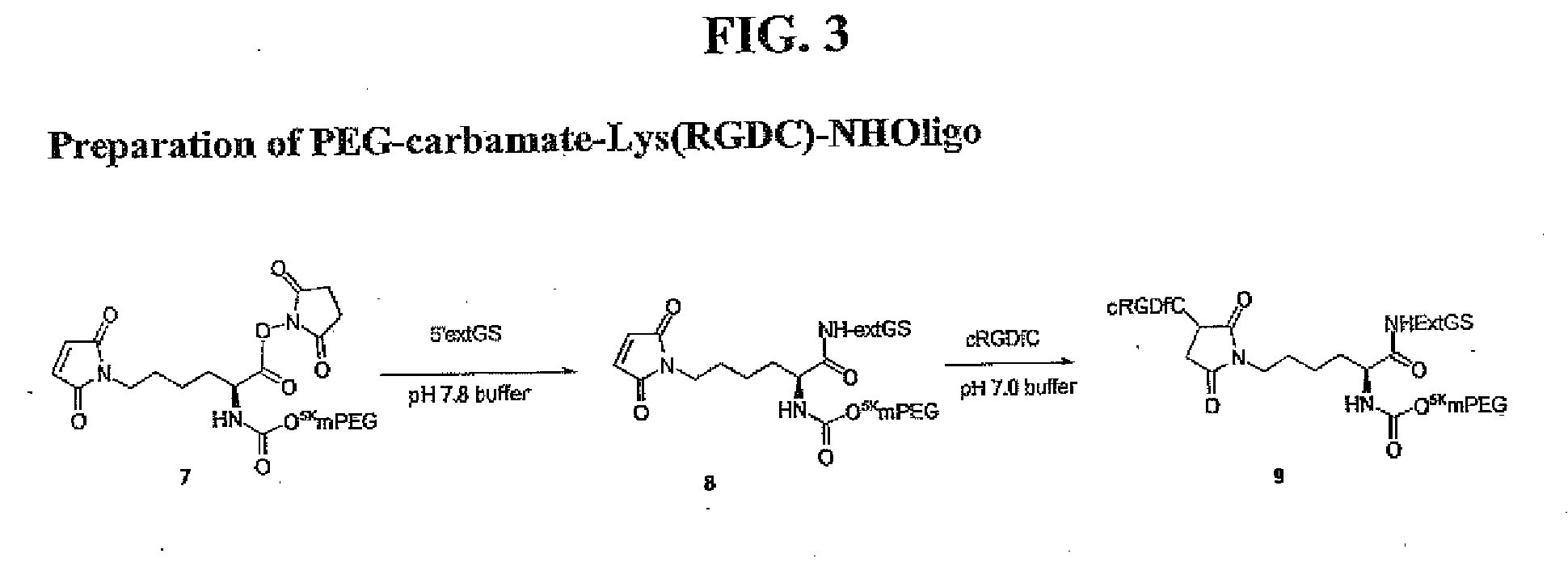Targeted polymeric prodrugs containing multifunctional linkers
- Summary
- Abstract
- Description
- Claims
- Application Information
AI Technical Summary
Benefits of technology
Problems solved by technology
Method used
Image
Examples
example 1
N-(Methoxycarbonyl)maleimide (Compound 1)
Methylchloroformate (4.4 mL, 56.7 mmol, 1 eq) was added to a solution of maleimide (5.5 g, 56.7 mmol, 1 eq) and NMM (6.2 mL, 56.7 mmol, 1 eq) in 200 mL of EtOAc at 0° C. The suspension was stirred at 0° C. for 30 minutes, filtered and washed with EtOAc. Filtrate and washings were combined and washed with cold water and dried over anhydrous Na2SO4. After filtration and evaporation under vacuum a pink solid was obtained. Purification by column chromatography on silica gel (Hexane-EtOAc, 1:1, v / v) provided the product (4.8 g, 55%).
example 2
Nε-Maleoyl-α-(Boc)-L-lysine (Compound 2)
N-(Methoxycarbonyl)maleimide (315 mg, 2.03 mmol, 1 eq) was added to a solution of Boc-L-lysine (500 mg, 2.03 mmol, 1 eq) in 10 mL of saturated aqueous NaHCO3 at 0° C. The mixture was stirred vigorously at 0° C. for 40 minutes and at room temperature for an additional hour. After cooling to 0° C., the solution was acidified to pH 3.0 with concentrated H2SO4 before extracting with ethyl acetate. The organic layers were combined and dried over anhydrous MgSO4. After removing the solvent in vacuo, the residue was purified by column chromatography on silica gel using a mixture of CHCl3-MeOH (5:1, v / v) to provide the product (458 mg, 69%): 1H NMR δ 1.39-1.87 (6H, m, (CH2)3), 1.44 (9H, s, Boc), 3.52 (2H, t, J=7.2 Hz, NCH2), 4.25-4.30 (1H, m, CH), 5.15 (1H, d, NH), 6.70 (2H, s, maleimide).
example 3
Nε-Maleoyl-α-L-lysine (Compound 3)
A solution of Nε-maleoyl-α-(Boc)-L-lysine (172 mg, 0.53 mmol) in 5 mL anhydrous DCM was treated with 10 mL of 2N HCl in ethyl ether for an hour at room temperature before addition of 10 mL of anhydrous ethyl ether. The resulting solid was filtered to yield 82 mg (59%) of the HCl salt of Nε-Maleoyl-α-L-lysine: 1H NMR (CD3OD) δ 1.36-1.54 (2H, m, CH2), 1.65 (2H, q, J=7.2 Hz, CH2), 1.83-2.02 (2H, m, CH2), 1.44 (9H, s, Boc), 3.53 (2H, t, J=6.9 Hz, NCH2), 3.95 (1H, t, 6.2 Hz, CH), 6.82 (2H, s, maleimide); 13C NMR (CD3OD) δ 23.17, 29.03, 31.01, 37.96, 135.26, 172.34, 175.20.
PUM
| Property | Measurement | Unit |
|---|---|---|
| Mass | aaaaa | aaaaa |
| Mass | aaaaa | aaaaa |
| Mass | aaaaa | aaaaa |
Abstract
Description
Claims
Application Information
 Login to View More
Login to View More - R&D
- Intellectual Property
- Life Sciences
- Materials
- Tech Scout
- Unparalleled Data Quality
- Higher Quality Content
- 60% Fewer Hallucinations
Browse by: Latest US Patents, China's latest patents, Technical Efficacy Thesaurus, Application Domain, Technology Topic, Popular Technical Reports.
© 2025 PatSnap. All rights reserved.Legal|Privacy policy|Modern Slavery Act Transparency Statement|Sitemap|About US| Contact US: help@patsnap.com



